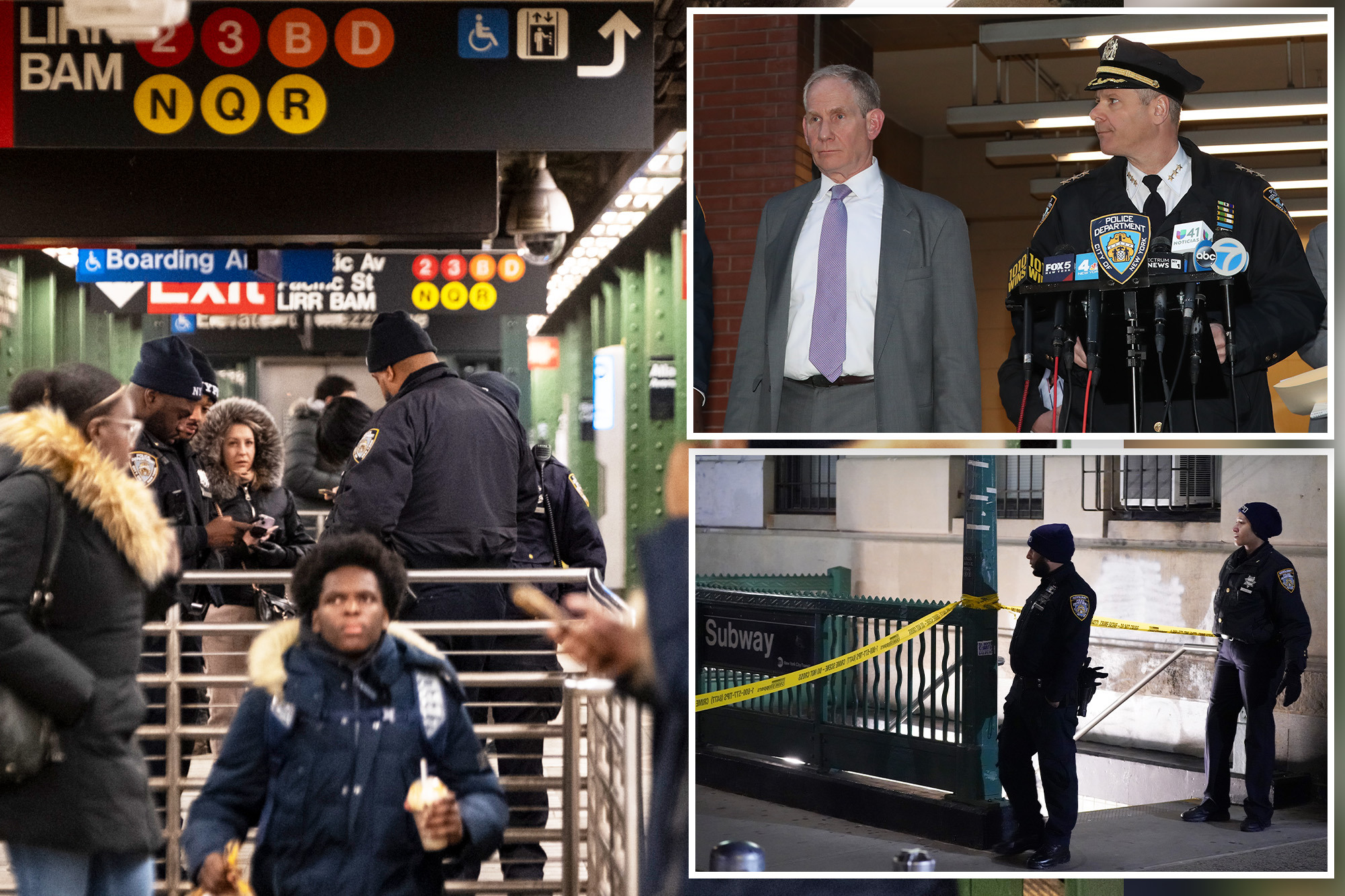
Crime on the subways has become significantly more violent since the pandemic with the number of felony assaults soaring when compared to pre-pandemic levels, an analysis by The Post revealed.
The number of attacks on trains that left victims injured jumped 53% from 2023’s 570 felony assaults to the 373 reported in 2019, according to stats.
Those 200 extra felony assaults meant that attacks resulting in substantial injury accounted for 25% of 2,285 major crimes reported on trains and in stations in 2023, compared to just 15% of the 2,499 major crimes in 2019, the data show.
Ridership remains down about 30% compared to the pre-pandemic years. These days approximately 4 million people ride the subways a day during the week, compared to 5.5 million in the run-up to COVID’s arrival and the city’s shutdown, according to estimates.
The surge in attacks underground that left victims injured and in need of treatment comes as the transit system sees a surge in murders.
There were three murders underground in 2019 compared to 10 in 2022 and five in 2023, according to the analysis.
There have already been three murders in the first three months of 2024, the data show.
Without the surge in assaults, overall crime in the transit system would be roughly in line with the rates seen underground before the pandemic when adjusting for ridership.
The surge in violence has left cops and criminal justice experts flummoxed, with no clear explanation of what is driving the disturbing trend.
“Things are different, things have changed,” said Christopher Herrmann, an associate professor at John Jay College of Criminal Justice-City University of New York, who hypothesized that lingering effects of the coronavirus pandemic were at play.
“When the PD is there, things are good; but when they’re not there, the numbers go up or the high-profile incidents happen and that’s what drives this fear of crime.”
The NYPD did not respond to request for comment by deadline.
“We have full confidence in the NYPD to keep New Yorkers safe in transit, and a surge of 1,000 officers has reduced crime significantly over the last six weeks,” said MTA spokeswoman Joana Flores.
The number of felony assaults was remarkably stable before the pandemic — after which, it shot up and then plateaued above 550, the figures show.
There were 375 in 2018, which was just two more than in 2019; while there were 340 in 2017, according to the data.
As the city reopened post-vaccination, the number of assaults underground jumped: The subway system clocked 466 felony assaults in 2021, as riders trickled back; and then skyrocketed to 556 in 2022 before inching up again in 2023, the data show.
“Reduced ridership [created] an environment with fewer witnesses, perpetrators become emboldened – and you see a permission structure develop,” said one veteran cop. “There’s systemic issues like inadequate staffing, recruitment, training; punitive legislation by local and state government; and a lack of mental health resources, insufficient social support services.”
The cop added: “All of these things contribute to a rise in violence. It’s never just one thing.”
The number of assaults on MTA employees on trains and stations and cops patrolling the system has soared too: 100 cops and 60 transit employees were assaulted in the system in 2023; both figures were up sharply from 2019 when 71 cops and 32 transit employees were assaulted.
The Post obtained documents earlier this month that showed showed that of the 41 cases of assault against MTA employees that were solved in 2023, more than half of the suspects arrested had histories of mental illness.
Additionally,The Post also revealed that the recent surge in crime was preceded by a massive drop-off in the number of patrols underground after the NYPD spent the $60 million in overtime it received from Gov. Kathy Hochul to boost its presence underground.
An ongoing debate over subway crime has raged as some zero in on recent homicides while their opponents argue the system remains safer than the city at-large and complain individual attacks get too much attention.
The paper’s examination of crime underground began after three people were murdered in just three weeks underground — headline grabbing events that were followed by the slashing of a conductor on an overnight train in Brooklyn, a subsequent work stoppage protesting safety worries by the MTA’s biggest union and Hochul controversially deciding to call in the National Guard.
Mayor Adams ordered cops to work additional overtime shifts to boost patrols amid the uptick and has signaled that he may look to expand the ranks of the NYPD’s transit division amid the boomeranging crime numbers — which fall with policing surges, but then spike again afterward.
“They have to be there in some presence and some way, so people feel deterred,” said John Jay’s Herrmann. “That they feel like ‘Hey, maybe there’s not as many cops, but if I do something, I’ll get caught,’”
He added: “When the cops are in the system, the crime goes down, but when the cops aren’t in the system, the crime goes back up.”














